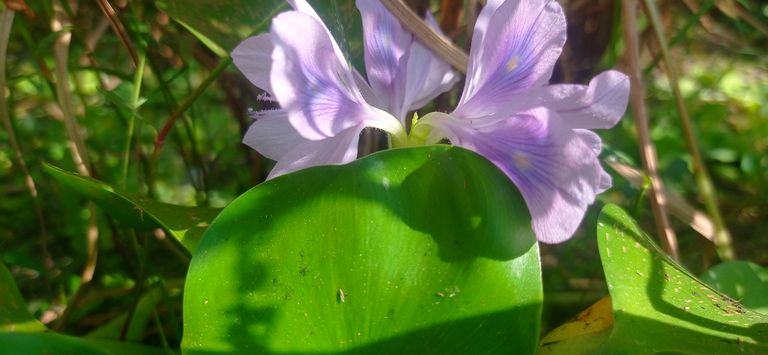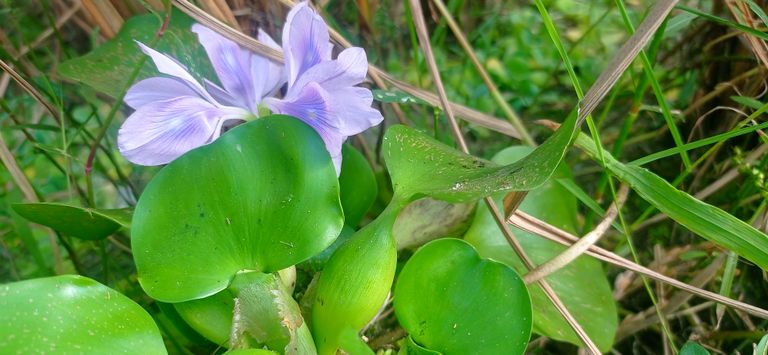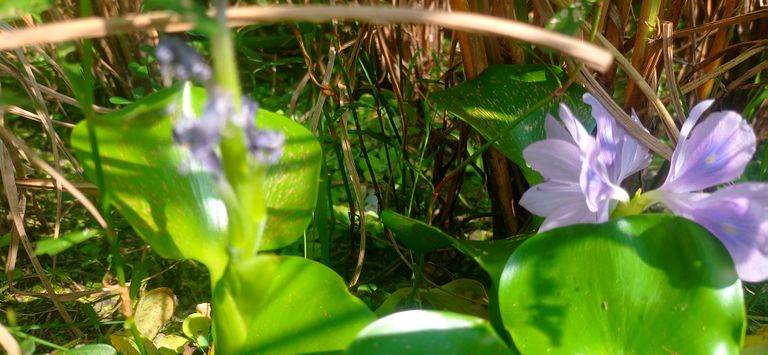Water hyacinth (Eichhornia crassipes) is a floating aquatic plant native to the Amazon basin, but it has spread widely across the world due to its rapid growth and adaptability. It is now found in many freshwater ecosystems, particularly in ponds, lakes, and slow-moving rivers. While its striking purple flowers and glossy green leaves may make it seem like an attractive addition to a pond, the presence of water hyacinth can have serious ecological and environmental impacts.
Water hyacinth grows rapidly and can form dense mats that cover the surface of a pond. This ability to spread quickly is facilitated by its high reproductive rate; a single plant can produce up to 5,000 seeds annually, and it also spreads vegetatively through offshoots that form new plants. In optimal conditions, water hyacinth can double in size in as little as two weeks. As a result, it can easily outcompete other plants in the pond, often leading to the displacement of native species and a decrease in biodiversity.


One of the most significant impacts of water hyacinth on pond ecosystems is its effect on oxygen levels in the water. The dense mats formed by water hyacinth block sunlight from reaching submerged aquatic plants, which are crucial for photosynthesis and oxygen production. As the plants die off due to lack of sunlight, decomposition consumes oxygen from the water. This can lead to hypoxic or anoxic conditions, where oxygen levels become too low to support aquatic life such as fish, invertebrates, and other organisms dependent on oxygen for survival.
Additionally, water hyacinth can alter the temperature and chemical composition of the water. Its thick coverage creates a barrier that traps heat, raising water temperatures beneath the surface. This can further disrupt the balance of the pond, particularly for temperature-sensitive species. Furthermore, the decomposition of water hyacinth can release nutrients such as nitrogen and phosphorus into the water, contributing to nutrient pollution and promoting the growth of other algae. This process, known as eutrophication, can result in algal blooms, which further deplete oxygen levels and make the water uninhabitable for many species.



Water hyacinth also has physical impacts on the pond’s ecosystem. The mats can obstruct water flow and impede recreational activities such as boating, fishing, and swimming. In addition, the plant’s rapid growth can clog irrigation systems and hydroelectric power plants, leading to significant economic losses and increased maintenance costs.



While water hyacinth is often considered a problematic invasive species, it does have some beneficial uses. It has been employed in wastewater treatment, where it helps absorb excess nutrients and pollutants from water. Additionally, the plant can be harvested and used in the production of compost, biogas, or even as a material for making products like paper and mats. Some researchers have also explored its potential as a biofuel source due to its fast growth and high biomass.



In conclusion, while water hyacinth might seem like a harmless aquatic plant, its presence in a pond can cause severe disruptions to the ecosystem. Its ability to grow rapidly and form dense mats can block sunlight, reduce oxygen levels, and promote nutrient pollution, all of which harm native species and degrade water quality. Effective management strategies, such as mechanical removal, biological control, and habitat restoration, are essential to mitigate the negative impacts of water hyacinth and maintain healthy pond ecosystems.
I really like how your photography has a place in my heart.